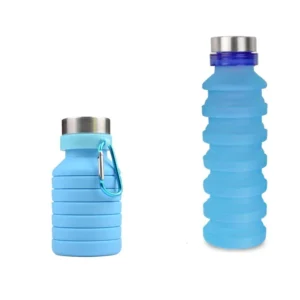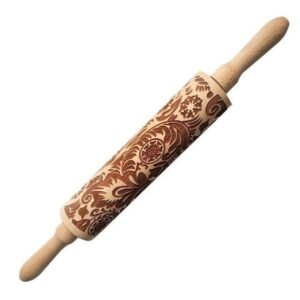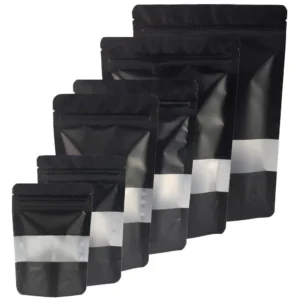Introduction
Welcome to the world of wontons, a traditional Chinese dish with a rich history and cultural significance. These delightful dumplings are made with a delicate wrapper filled with savory ingredients, creating a burst of flavors in every bite. Wontons are often served in a flavorful broth, making it not only delicious but also comforting and satisfying. Whether you prefer them in a soup or simply enjoy them on their own, wontons are a versatile dish that can be customized with various fillings and seasonings. So grab your spoon and get ready to indulge in the irresistible charm of wonton goodness!
Potstickers vs. Wontons: What’s the Difference?
Potstickers and wontons are both popular Chinese dumplings, but they have distinct differences in their appearance, preparation, and cooking methods.
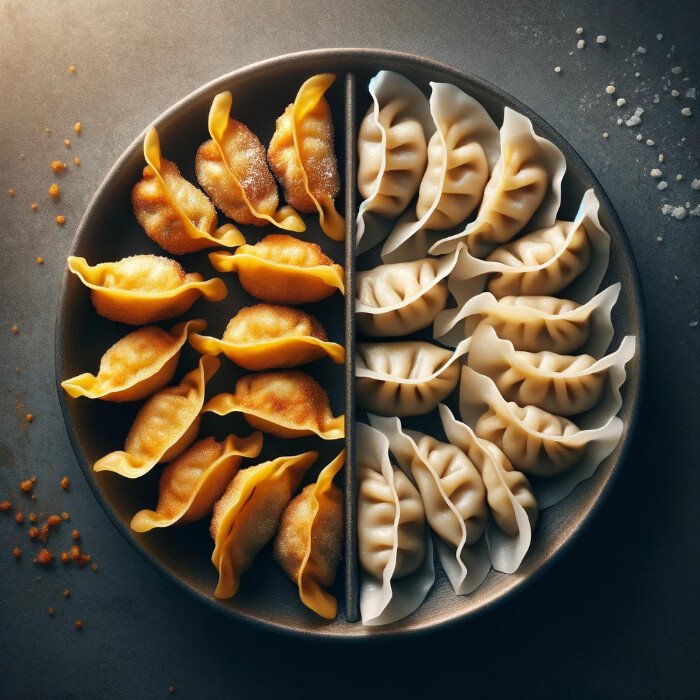
Appearance:
Potstickers:Pork wontons, also known as potstickers, are delicious dumplings that have a thicker and chewier wrapper. They are lightly fried on one side, giving them a crispy texture. The pork wontons recipe typically involves folding the mixture into a crescent shape and creating a pleated edge using a spoon.
Wontons: Wontons, on the other hand, have a thinner and more delicate wrapper. They are usually folded into a triangle shape and have a smoother texture.
wontons
Potstickers: The filling for potstickers is typically a mixture of ground meat (such as pork or chicken), vegetables, and seasonings. The filling is then placed in the center of the wrapper and folded and pleated to seal it.
Wontons: Wontons often have a filling made of ground meat, such as pork or shrimp, along with seasonings. The filling is placed in the center of the wrapper, and the edges are sealed by folding and pinching them together.
Cooking methods:
Potstickers: These dumplings are first pan-fried to create a crispy bottom and then steamed to cook the filling. This combination of cooking methods gives potstickers their signature texture.
Wontons: Wontons are typically boiled in a flavorful broth until they are cooked through. They can also be deep-fried for a crispy texture.
Significance of Wonton Soup as a Popular Dish
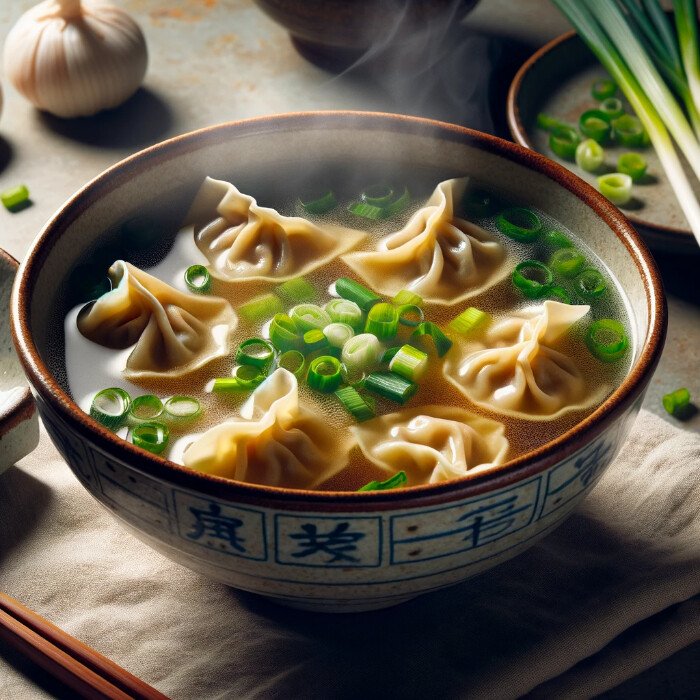
Wonton soup is beloved by people all over the world for its delicious taste and comforting qualities. It is a staple in Chinese cuisine and has gained popularity in many other cultures as well. This humble dish holds great significance, not just for its flavors, but also for its cultural symbolism.
Loved by people worldwide
Wonton soup has gained a global fan base due to its delectable combination of flavors and textures. The dumplings, filled with minced meat or vegetables, are wrapped in thin dough and cooked in a flavorful broth. The result is a satisfying bowl of soup that warms both the body and the soul.
Symbol of good luck and prosperity
In Chinese culture, wontons are considered a symbol of good luck and prosperity. Their shape resembles gold ingots, which were used as currency in ancient China. Eating wonton soup during special occasions, such as Lunar New Year celebrations, is believed to bring good fortune and abundance for the coming year.
Enjoyed during special occasions
Wonton soup holds a special place on the dining table during festive events like Lunar New Year. Families gather together to make wontons from scratch, sharing stories and laughter while preparing this cherished dish. It has become an integral part of traditional celebrations, symbolizing unity and happiness.
Artistry and craftsmanship
The making of wontons requires skillful artistry and meticulous craftsmanship. From folding the delicate wrappers to creating various shapes for the dumplings, it showcases the culinary traditions passed down through generations. Each bite represents not only a burst of flavor but also the dedication put into crafting these little parcels of joy.
Step-by-step Guide: How to Make Wontons
Prepare the Filling
To make homemade wontons, start by preparing the filling. You can use ingredients like ground meat, shrimp, or vegetables. Get creative and mix different flavors and textures to your liking.
Fill and Fold the Wonton Wrappers
Once the filling is ready, it’s time to assemble the wontons. Place a small amount of filling onto each wonton wrapper, making sure not to overfill them. Moisten the edges of the wrapper with water to help seal them together. Then, fold and seal them into your desired shapes – whether it’s a simple triangle or a more intricate fold.
Boil the Wontons
With your wontons folded and sealed, it’s time to cook them. Bring a pot of water to boil and carefully drop in the wontons. Let them cook for a few minutes until they float to the surface, indicating that they are cooked through. This should take around 3-5 minutes depending on their size.
Serve and Enjoy
Once cooked, you have options for serving your homemade wontons. One popular choice is to enjoy them in soup – simply add them to a flavorful broth along with some vegetables and garnish with fresh herbs. Alternatively, you can serve them as appetizers on their own with dipping sauces like soy sauce or sweet chili sauce.
Making wontons at home allows you to customize the flavors and experiment with different fillings. It’s an enjoyable process that can be done alone or with friends or family members joining in on the fun.
Tips for Perfectly Wrapping Wontons
To achieve the perfect wonton, there are a few key tips to keep in mind. Let’s dive into these tips and get you on your way to wrapping wontons like a pro!
Fresh and Pliable Wonton Wrappers
Ensure your wonton wrappers are fresh and pliable. Stale or dry wrappers can be difficult to fold and may crack or tear. To keep them fresh, store them in an airtight container or wrap them tightly with plastic wrap until ready to use.
Avoid Overstuffing
Less is more! Overstuffing them can lead to bursting during cooking, resulting in a messy and unevenly cooked wonton. Use just enough filling – about a teaspoon – for each wrapper.
Moistening the Edges
To seal the wonton securely, lightly moisten the edges of the wrapper with water using your fingertip or a pastry brush. This will help create a strong bond when folding and prevent any leaks during cooking.
Experiment with Folding Techniques
Have fun experimenting with different folding techniques! While simple triangles are commonly used, you can also try more intricate pleats for an impressive presentation. Get creative and find a folding style that suits your preferences.
Remember, practice makes perfect. Don’t be discouraged if your first attempts aren’t flawless; it takes time to develop the skill. With these tips in mind, you’ll be well on your way to mastering the art of wrapping wontons!
Flavorful Variations: Fried Wontons and Pork Wontons
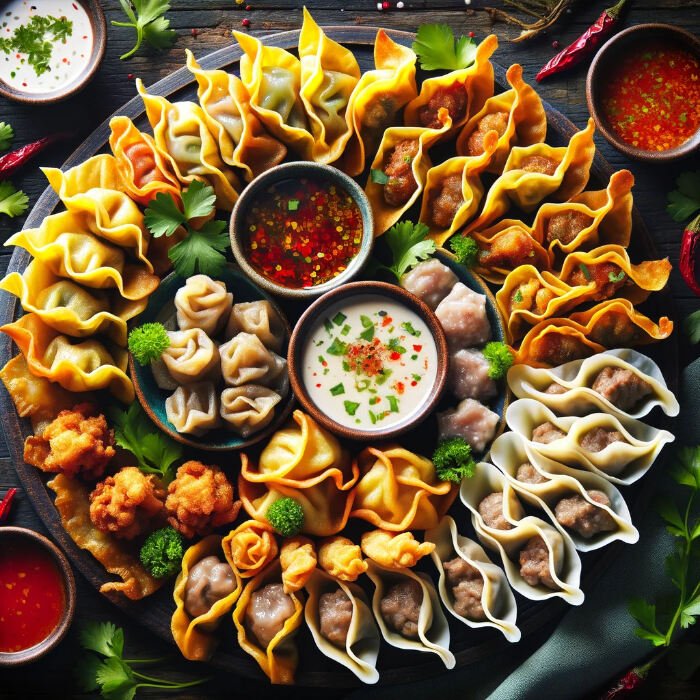
In the world of wontons, there are two delightful variations that are sure to tantalize your taste buds: fried wontons and pork wontons. These mouthwatering options offer unique flavors and textures that set them apart from the traditional boiled wonton soup.
Fried Wontons Offer a Crispy Texture
If you’re craving something crunchy, fried wontons are the way to go. These golden-brown delights boast a satisfyingly crispy exterior while maintaining a tender filling inside. They make for a perfect appetizer or snack option, whether you’re hosting a party or simply looking for a delicious treat.
Pork Wontons: Juicy and Flavorful Filling
Pork wontons, on the other hand, are renowned for their juicy and flavorful filling made primarily from ground pork. The combination of minced meat, green onions, water chestnuts, ginger, and other seasonings creates an explosion of taste with every bite. The succulent pork filling adds richness to these delectable dumplings.
Both fried wontons and pork wontons offer versatility in terms of flavor profiles. While pork is the classic choice for the filling in traditional Cantonese cuisine, you can experiment with different meats like chicken or even vegetarian options if you prefer. Don’t be afraid to get creative and try out various combinations to find your favorite flavor.
Exploring Different Wonton Recipes: Cream Cheese Wontons and More
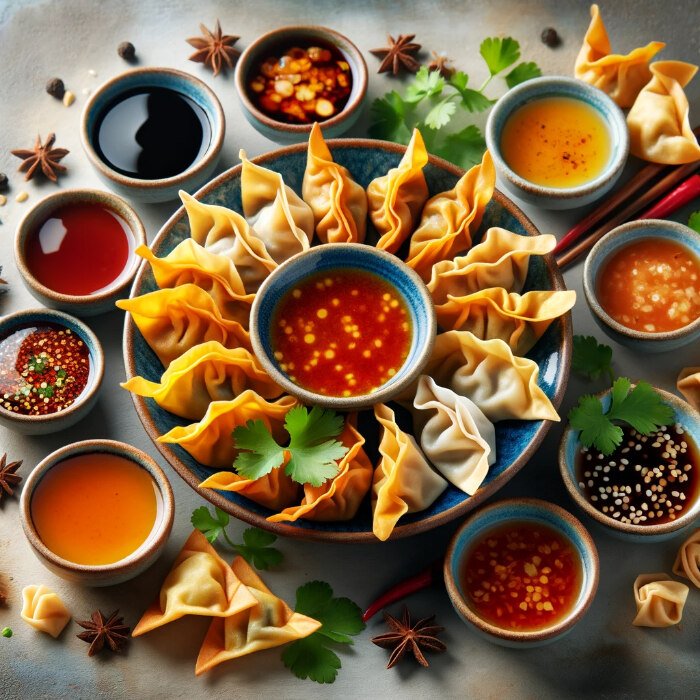
Cream cheese wontons are a popular fusion twist on traditional wontons. These delectable treats feature a creamy mixture enclosed in a crispy wonton wrapper, often served with sweet and sour sauce for dipping. But cream cheese isn’t the only filling option when it comes to wontons – there’s a whole world of creative recipes to explore!
Seafood-Filled Wontons: A Taste of the Ocean
If you’re a seafood lover, why not try making wontons filled with shrimp or crab? These succulent morsels add a delightful burst of flavor to your palate. The combination of delicate seafood and the crunchy texture of the wonton wrapper creates an irresistible bite-sized appetizer or main dish.
Vegetarian Delights: Going Green with Wontons
Wontons aren’t just for meat lovers; they can also be enjoyed by vegetarians! Fill your wonton wrappers with a medley of fresh vegetables like mushrooms, cabbage, carrots, or spinach. Add some aromatic herbs and spices for an extra kick of flavor. These vegetarian wontons are perfect as an appetizer or as part of a wholesome meal.
Dessert Wontons: A Sweet Surprise
Who says wontons are limited to savory dishes? You can satisfy your sweet tooth by creating dessert wontons too! Imagine warm, crispy wonton wrappers filled with luscious cream cheese and topped with powdered sugar or drizzled with chocolate sauce. It’s like having a mini pastry that’s both crunchy and creamy at the same time.
These variations highlight the versatility of wonton wrappers in creating diverse culinary delights. From savory cream cheese-filled options to seafood delights, vegetarian alternatives, and even dessert creations – there’s no shortage of possibilities.
Enhancing the Flavors: Dipping Sauce Ideas for Wontons
Dipping sauces are an essential part of enjoying wontons. They add an extra layer of flavor that complements the savory goodness of these delectable dumplings. Whether you prefer classic options or want to experiment with homemade creations, there are endless possibilities to explore.
Classic Dipping Sauces: Soy Sauce, Chili Oil, and Vinegar
Classic dipping sauces like soy sauce, chili oil, and vinegar are tried-and-true options that never disappoint. The salty umami taste of soy sauce pairs perfectly with the delicate flavors of wontons. For those who enjoy a little heat, a drizzle of chili oil adds a spicy kick. And if you prefer a tangy element, a splash of vinegar can do wonders in enhancing the overall taste.
Sweet and Sour Sauce: A Tangy Twist for Fried Wontons
If you’re indulging in fried wontons, consider dipping them in sweet and sour sauce for a delightful contrast. This tangy combination of sweetness and acidity perfectly complements the crispy exterior and savory filling of fried wontons. It adds an exciting burst of flavor that will leave your taste buds wanting more.
Homemade Dipping Sauces: Get Creative with Ginger, Garlic, and Sesame Oil
For those who love to experiment in the kitchen, creating homemade dipping sauces opens up a world of possibilities. You can infuse your sauces with ingredients like ginger, garlic, or sesame oil to add depth and complexity to your wonton experience. These aromatic flavors elevate the overall taste profile and make each bite truly memorable.
Delighting in the World of Wonton Creations

Regional Variations: A Wonton Soup Journey
Let’s embark on a flavorful adventure as we explore the regional variations of wonton soup from different parts of China and other Asian countries. Each region adds its own twist to this beloved dish, creating a diverse range of flavors and techniques. From the delicate Cantonese style with its thin wrappers and light broth to the hearty Sichuan version packed with bold spices, there is something for everyone to savor.
Unique Fillings: Exploring Flavorful Possibilities
Wontons are not just about the wrapper; it’s what’s inside that counts! Discover the world of unique fillings that add distinct flavors to these delectable dumplings. Imagine biting into a wonton filled with succulent crab meat or enjoying the earthy taste of mushrooms. For those seeking an extra crunch, try wontons filled with bamboo shoots. The possibilities are endless, limited only by your imagination and taste buds.
Innovative Presentations: Artistry in Every Bite
In the realm of wonton creations, presentation is key. Chefs take pride in shaping wontons into intricate designs before cooking them to perfection. These visually stunning creations elevate the dining experience, making every bite a work of art. Whether it’s folding wontons into beautiful flower shapes or crafting delicate pleats, these innovative presentations showcase not only culinary skill but also creativity.
From elegant appetizers like Crab Rangoon to comforting bowls of homemade wonton soup served at family gatherings or parties, wontons have become a staple in many households. Their versatility allows them to be enjoyed as both an everyday meal or as a special treat for celebrations.
So why not roll up your sleeves and try your hand at making these delightful dumplings? With some practice and love for cooking, you can create your own homemade wontons that will impress friends and family alike. Remember, it’s not just about the taste, but also the joy that comes from crafting something delicious with your own two hands.
Nutrition Information and Analysis for Wontons
Wontons are a popular Chinese dumpling dish that can be enjoyed as an appetizer or main course. They are typically filled with a mixture of ground meat, such as pork or shrimp, along with various seasonings and vegetables. While they are delicious, it’s important to consider the nutrition information and analysis for wontons to make informed dietary choices.
One serving of wontons, which is typically around 4-6 pieces, contains approximately 200-300 calories. The exact calorie count can vary depending on the size and filling of the wontons. Wontons are also a good source of protein, with each serving providing around 10-15 grams. However, they can be high in sodium due to the use of soy sauce and other seasonings.
When it comes to the nutritional analysis of wontons, it’s essential to pay attention to the fat content. Depending on the filling and cooking method, wontons can contain a moderate amount of fat. It’s important to choose leaner fillings and opt for steamed or boiled wontons instead of fried ones to reduce the fat content.
Conclusion
From understanding the significance of wonton soup as a popular dish to mastering the art of wrapping wontons, you’ve gained valuable insights into this delightful culinary creation. Just like an artist with a paintbrush, you can now create your own wonton masterpieces that will leave your taste buds dancing with joy.
But don’t stop here! The world of wontons is vast and ever-evolving, offering endless possibilities for exploration. Unleash your creativity by experimenting with different flavors and fillings. Whether it’s indulging in crispy fried wontons or savoring succulent pork-filled ones, there’s always something new to discover in this realm of culinary bliss.
FAQs
Can I freeze uncooked wontons?
Yes! If you have extra uncooked wontons or want to prepare them ahead of time, freezing is a great option. Place them on a baking sheet lined with parchment paper and freeze until solid. Then transfer them to an airtight container or freezer bag for long-term storage. When ready to cook, simply boil or fry them directly from frozen – no need to thaw!
How long can I store cooked wontons?
Cooked wontons can be stored in the refrigerator for up to 3 days. Place them in an airtight container or wrap them tightly with plastic wrap to keep them fresh. When reheating, you can steam them for a few minutes or microwave them with a damp paper towel to prevent drying out.
Can I use store-bought wonton wrappers?
Absolutely! While making your own wonton wrappers can be a fun and rewarding experience, using store-bought ones is perfectly fine. Look for wonton wrappers in the refrigerated section of your local grocery store or Asian market. They are usually labeled as “wonton skins” and come in various sizes.
What other fillings can I use besides pork?
Pork is a classic filling for wontons, but you can get creative and experiment with other ingredients too. Shrimp, chicken, beef, tofu, or even vegetables like mushrooms and cabbage can be used as delicious alternatives. Feel free to mix and match different fillings to create unique flavor combinations that suit your taste preferences.
Are there any vegetarian options for wontons?
Definitely! If you follow a vegetarian diet or simply want to enjoy meat-free wontons, there are plenty of options available. You can use tofu as a protein-packed substitute for meat or load your wontons with an assortment of vegetables like carrots, mushrooms, spinach, and more. The possibilities are endless.
Frequently Linked Pages
1. Dumplings Near Me – Dumplings Near Me: Best Deals & Delivery Options
2. Chop Suey – Chop Suey: A Delicious Culinary Adventure In Every Bite
3. Mapo Tofu – Mapo Tofu Recipe: The Authentic and Delicious Way!
4. Kung Pao Chicken – Kung Pao Chicken Recipe: Spicy Delight!
5. Peking Duck – Peking Duck Recipe: Easy Home Version
6. Chinese Food – Chinese Food: A Gastronomic Adventure into Authentic Oriental Flavors
7. Chow Mein – Chow Mein: A Flavorful Exploration of the Classic Chinese Stir-Fried Noodles
8. Sashimi – sashimi: A Guide To The Delicate Art Of Raw Seafood


